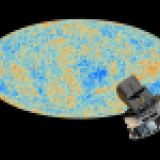2018 Gruber Cosmology Prize Press Release
| Media Contact: | |
| A. Sarah Hreha The Gruber Foundation +1 (203) 432-6231 info@gruber.yale.edu | |
| Online Newsroom: www.gruber.yale.edu/news-media | |
| FOR IMMEDIATE RELEASE |
Planck Team Receives Gruber Cosmology Prize for Precise Measure of Universe's Contents and Contours
  |
| Nazzareno Mandolesi Jean-Loup Puget |
May 10, 2018, New Haven, CT – The Planck team, and its Principal Investigators Nazzareno Mandolesi and Jean-Loup Puget, are the recipients of the 2018 Gruber Cosmology Prize. From 2009 to 2013 the European Space Agency’s Planck observatory collected data that has provided cosmology with the definitive description of the universe on the largest and smallest scales.
“These measurements,” the Gruber Prize citation reads, “have led to the determination of cosmological parameters (matter content, geometry, and evolution of the universe) to unprecedented precision.”
The three recipients will divide the $500,000 annual award. Mandolesi and Puget, as the principal investigators on the observatory’s two instruments, will each receive $125,000, while the Planck team will receive $250,000. The Prize will be awarded on August 20, at the General Assembly of the International Astronomical Union, in Vienna, Austria. Mandolesi and Puget will also receive a gold medal.
The Planck observatory consisted of two instruments, each attuned to its own portion of the electromagnetic spectrum invisible to the eye. The High Frequency Instrument, under the direction of Puget, studied the universe in the far-infrared regime; the Low Frequency Instrument, under the direction of Mandolesi, mostly observed in the microwave regime. Both infrared and microwave radiation are on the “low” end of the electromagnetic spectrum in that their waves are longer than the rainbow section we see with our eyes—and long waves are precisely what cosmologists need in order to observe the earliest light in a universe that, through expansion, has been stretching the radiation for 13.8 billion years.
In particular, cosmologists study the Cosmic Microwave Background (CMB), the relic radiation from the moment that the universe had cooled enough for hydrogen atoms and photons to decouple and go their separate ways. That “flashbulb” moment, dating to 380,000 years after the universe came into existence, would have survived as a sort of snapshot—a “baby picture” of the universe that suffuses space in every direction.
Scientists first observed the CMB, which had been predicted by theoreticians, by accident in 1964. According to the relatively primitive radio-astronomy instrumentation of the day, the CMB appeared to be smooth—not at all what’s to be expected from an infant universe that would grow into its current adult state of stars and galaxies. In 1992 the first space probe of the CMB, the Cosmic Background Explorer (COBE), found the extraordinarily subtle variations in temperature that would be the signature fluctuations of those structural seeds. (The Principal Investigator, John Mather, and the COBE team received the 2006 Gruber Prize in Cosmology.) In 2003 a follow-up space probe, the Wilkinson Microwave Anisotropy Probe (WMAP), provided a far sharper view of the CMB that allowed cosmologists to determine the age of the universe as well as the distribution of its contents—dark matter, dark energy, and “ordinary” matter. (The PI for WMAP, Charles Bennett, along with the WMAP collaboration received the 2012 Gruber Prize in Cosmology.)
The Planck observatory, launched by the European Space Agency in 2009, achieved an order-of-magnitude improvement in sensitivity. As a result, says Mandolesi, Planck offers “the last word on temperature.” Radiation “pollution” in the nearby universe places a natural limit on the ability to measure temperature fluctuations in the CMB; Planck reached that precision threshold, effectively ending a phase in CMB studies that was opened by COBE in 1992.
Planck also provided a new census of the universe: 26.8 percent dark matter, 68.3 percent dark energy, and 4.9 percent ordinary matter. The observatory also found extremely robust evidence that the geometry of the universe is “flat”—that parallel lines truly never meet—a pre-condition for leading theories of the formation and structure of the universe.
But not only did Planck vastly improve the study of the fluctuations in the CMB that, moving forward in time, would grow into the universe as we know it, Planck also achieved greater resolution in tracing those fluctuations back in time, all the way to their origins—the theoretical moment, one trillionth of a trillionth of a trillionth of a second after the universe came into existence, during which space went through an “inflationary” stage that stretched its size a trillion-fold. (Alan Guth and Andrei Linde received the 2004 Gruber Prize in Cosmology for developing the theory of cosmic inflation.)
The Planck observatory was named for Max Planck, the German theoretical physicist who, in 1900, proposed the need for a mathematical constant to describe the energy of the universe on the smallest scales. The Planck constant subsequently became the foundation for quantum mechanics, and the Planck observatory, appropriately enough, has captured the quantum fluctuations that seeded the universe immediately after it came into existence.
For Puget, one of the most important outcomes of the Planck observatory is that it validated with very high precision a model of the universe built out of general relativity, modeling gravity and quantum physics, which describes our best knowledge of particles and their interactions. While general relativity and quantum mechanics are notoriously mutually exclusive—gravity is the one universal force that quantum math can’t contain—they obviously concur together in an amazingly accurate description of our universe and its evolution.
Finally, for Mandolesi, post-Planck experiments to observe CMB polarized anisotropies have to treasure the lessons learned from Planck.
By probing both theories at an unprecedented level of precision, Planck has placed the current cosmological model of the universe on solid observational ground and provided theorists with data to plumb for decades to come.
Additional Information
In addition to the cash award, each recipient will receive a gold laureate pin and a citation that reads:
The Gruber Foundation is pleased to present the 2018 Cosmology Prize to the Planck Team, and to Jean-Loup Puget and Nazzareno Mandolesi, the leaders of the HFI and LFI instrument consortia, for mapping the temperature and polarization of the cosmic microwave background radiation with the ESA Planck spacecraft.
Planck measured, with unprecedented precision, the matter content and geometry of the universe, the imprint on the CMB of hot gas in galaxy clusters and of gravitational lensing by large-scale structure, constrained a hypothetical `inflationary' phase, pinned down when the first stars formed, and provided unique information about interstellar dust and magnetic fields in our Galaxy.
* * *
Laureates of the Gruber Cosmology Prize:
- 2017: Sandra M. Faber, for a body of work that has helped establish many of the foundational principles underlying the modern understanding of the universe on the largest scales
- 2016: Rainer Weiss, Kip Thorne, Ronald Drever, and the entire LIGO team, for pursuing a vision to observe the universe in gravitational waves, leading to a first detection that emanated from the collision of two black holes
- 2015: John Carlstrom, Jeremiah Ostriker, and Lyman Page, for their individual and collective contributions to the study of the universe on the largest scales
- 2014: Jaan Einasto, Kenneth Freeman, Brent Tully and Sidney van den Bergh, for their pioneering contributions to the understanding of the structure and composition of the nearby Universe
- 2013: Viatcheslav Mukhanov and Alexei Starobinsky, for their profound contribution to inflationary cosmology and the theory of inflationary perturbations of the metric. These developments changed our views on the origin of our universe and on the mechanism of formation of its structure
- 2012: Charles Bennett and the WMAP Team, for their exquisite measurements of anisotropies in the relic radiation from the Big Bang---the Cosmic Microwave Background
- 2011: Marc Davis, George Efstathiou, Carlos Frenk and Simon White, for their pioneering use of numerical simulations to model and interpret the large-scale distribution of matter in the Universe
- 2010: Charles Steidel, for his groundbreaking studies of the distant Universe
- 2009: Wendy Freedman, Robert Kennicutt and Jeremy Mould, for the definitive measurement of the rate of expansion of the universe, Hubble's Constant
- 2008: J. Richard Bond, for his pioneering contributions to our understanding of the development of structures in the universe
- 2007: Saul Perlmutter and Brian Schmidt and their teams: the Supernova Cosmology Project and the High-z Supernova Search Team, for independently discovering that the expansion of the universe is accelerating
- 2006: John Mather and the Cosmic Background Explorer (COBE) Team, for studies confirming that our universe was born in a hot Big Bang
- 2005: James E. Gunn, for leading the design of a silicon-based camera for the Hubble Space Telescope and developing the original concept for the Sloan Digital Sky Survey
- 2004: Alan Guth and Andrei Linde, for their roles in developing and refining the theory of cosmic inflation
- 2003: Rashid Alievich Sunyaev, for his pioneering work on the nature of the cosmic microwave background and its interaction with intervening matter
- 2002: Vera Rubin, for discovering that much of the universe is unseen black matter, through her studies of the rotation of spiral galaxies
- 2001: Martin Rees, for his extraordinary intuition in unraveling the complexities of the universe
- 2000: Allan R. Sandage and Phillip J. E. (Jim) Peebles, Sandage for pursuing the true values of the Hubble constant, the deceleration parameter and the age of the universe; Peebles for advancing our understanding of how energy and matter formed the rich patterns of galaxies observed today
The Prize recipients are chosen by the Cosmology Selection Advisory Board. Its members are:
James Evans, University of Puget Sound; Paul Ho, Institute of Astronomy and Astrophysics, Academia Sinica; Robert Kennicutt, University of Cambridge (Chair); Frans Pretorius, Princeton University; Subir Sarkar, University of Oxford; Rashid Sunyaev, Max Planck Institute for Astrophysics; Linda Tacconi, Max Planck Institute for Extraterrestrial Physics. Wendy Freedman of the University of Chicago and Martin Rees of the University of Cambridge also serve as special Cosmology advisors to the Foundation.
* * *
By agreement made in the spring of 2011 The Gruber Foundation has now been established at Yale University.
The Gruber International Prize Program honors individuals in the fields of Cosmology, Genetics and Neuroscience, whose groundbreaking work provides new models that inspire and enable fundamental shifts in knowledge and culture. The Selection Advisory Boards choose individuals whose contributions in their respective fields advance our knowledge and potentially have a profound impact on our lives.
The Cosmology Prize honors a leading cosmologist, astronomer, astrophysicist or scientific philosopher for theoretical, analytical, conceptual or observational discoveries leading to fundamental advances in our understanding of the universe.
* * *
For more information on the Gruber Prizes, visit www.gruber.yale.edu, e-mail info@gruber.yale.edu or contact A. Sarah Hreha at +1 (203) 432-6231. By mail: The Gruber Foundation, Yale University, Office of Development, PO Box 2038, New Haven, CT 06521.
Media materials and additional background information on the Gruber Prizes can be found at our online newsroom: www.gruber.yale.edu/news-media




